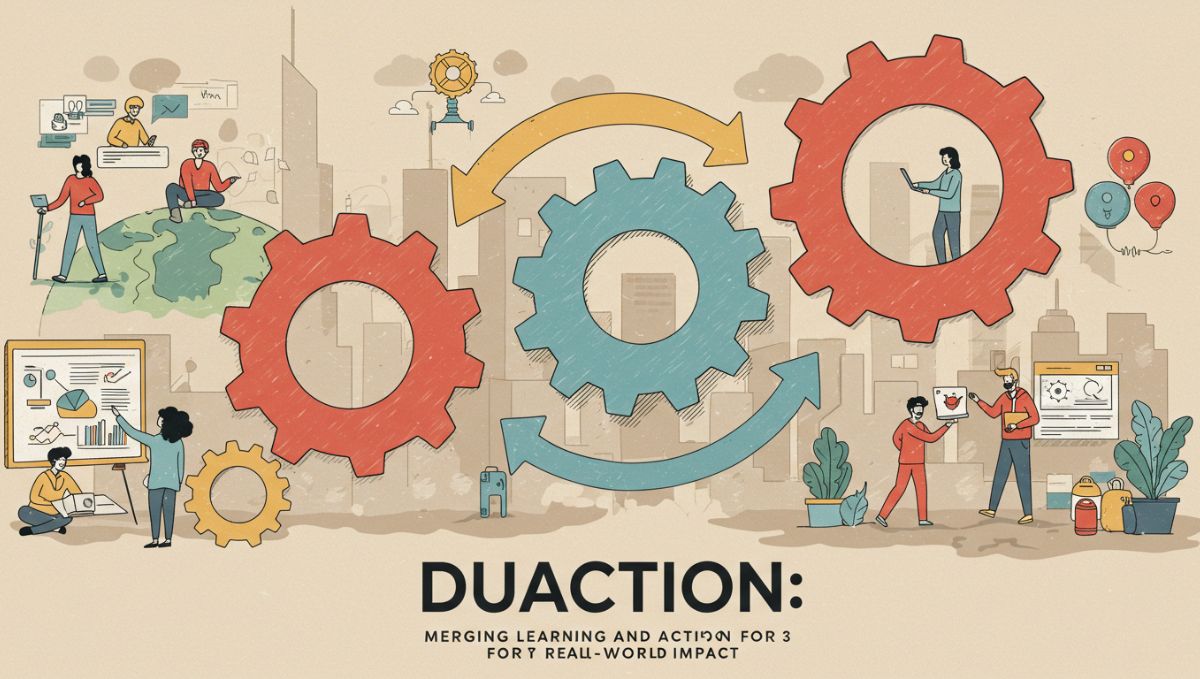Education is rapidly evolving, and traditional classroom learning is no longer enough to prepare people for a fast-changing world. Duaction is a forward-thinking approach that merges education with action-based experiences, creating a model where learners don’t just absorb information — they apply it immediately to real-world challenges.
By combining theory with practice in a balanced, intentional way, Duaction offers a pathway to deeper understanding, skill mastery, and impactful results.
What is Duaction?
Duaction is a dual-focused educational method that integrates structured learning with hands-on application. The name comes from dual + action, reflecting its mission to bridge the gap between knowing and doing.
The core idea is simple but powerful:
Learn something → Apply it right away → Learn more through doing.
The Core Principles of Duaction
1. Immediate Application
Knowledge is reinforced through real-world use, preventing concepts from remaining abstract.
2. Problem-Oriented Learning
Lessons are framed around real challenges rather than isolated topics.
3. Continuous Feedback
Learners receive immediate insights into their performance and areas for improvement.
4. Collaborative Approach
Team-based projects mirror professional environments and encourage communication skills.
How Duaction Differs from Traditional Education
In traditional systems, students often learn for years before applying knowledge. Duaction flips this timeline by introducing practical projects from day one.
For example:
-
Instead of just reading about marketing strategies, learners run small campaigns.
-
Instead of only studying coding syntax, they build real applications early on.
This integration accelerates skill development and boosts confidence.
Benefits of the Duaction Approach
1. Better Retention
Practical use helps commit concepts to long-term memory.
2. Higher Engagement
Working on tangible projects keeps motivation levels high.
3. Career Readiness
Graduates have portfolios of real work, not just certificates.
4. Adaptability
Skills learned in action are easier to transfer to new contexts.
Duaction in Action: Key Fields
1. Technology and Coding
Students learn programming by contributing to live projects or open-source software.
2. Business and Entrepreneurship
Participants design, launch, and iterate real products while studying theory.
3. Healthcare Training
Medical students practice in simulated and live environments alongside classroom study.
4. Creative Industries
Artists, designers, and filmmakers work on client projects while refining techniques.
The Role of Mentors in Duaction
In Duaction, mentors replace the role of passive lecturers. They guide learners through challenges, offer constructive feedback, and connect theory to practice.
Mentors also:
-
Share personal industry experiences.
-
Help learners avoid common mistakes.
-
Foster networking opportunities.
Tools and Platforms Supporting Duaction
Digital platforms have made Duaction more accessible by enabling remote collaboration and project management. Common tools include:
-
Project Management Software like Trello or Asana.
-
Communication Tools like Slack and Microsoft Teams.
-
Learning Management Systems that integrate practical tasks into courses.
Challenges of the Duaction Model
1. Resource Demands
Hands-on learning requires materials, tools, and mentor time.
2. Assessment Complexity
Evaluating both theory and practice can be more difficult.
3. Scaling Issues
Large groups may be harder to manage effectively in active projects.
Solutions to Overcome These Challenges
-
Using blended learning models to combine online theory with local practical work.
-
Leveraging peer-to-peer review systems to handle larger groups.
-
Partnering with industry organizations for project opportunities.
The Future of Duaction
Looking ahead, Duaction could expand in several ways:
-
Integration with AI tutors that adapt learning paths in real time.
-
Global project exchanges where learners from different countries collaborate.
-
Increased emphasis on sustainability-focused projects in education.
Why Duaction Matters Now More Than Ever
The pace of change in the workforce means people need to adapt quickly. Duaction ensures that learners don’t just collect knowledge but build actionable skills they can use immediately.
It shifts education from a passive process into an active, results-driven journey — one that prepares individuals not just for exams, but for life.
Conclusion
Duaction transforms education into a dynamic process where theory and practice are inseparable. It’s not about replacing traditional learning but enhancing it with purposeful action.
Whether in schools, universities, or corporate training programs, Du-action has the potential to close the skills gap and create more capable, confident problem-solvers.
In a world where adaptability is the most valuable skill, Duaction ensures that learning never stops — and that every lesson leaves a mark in the real world.

